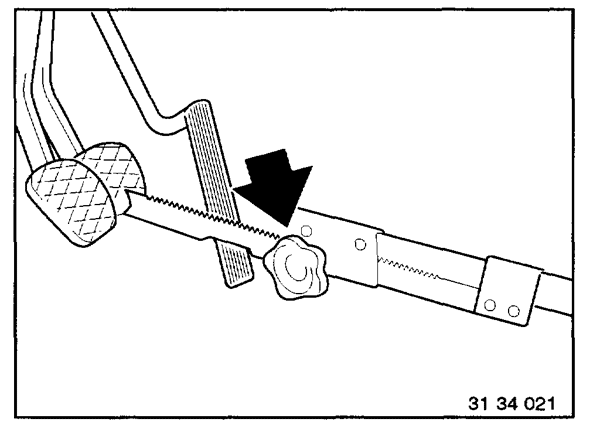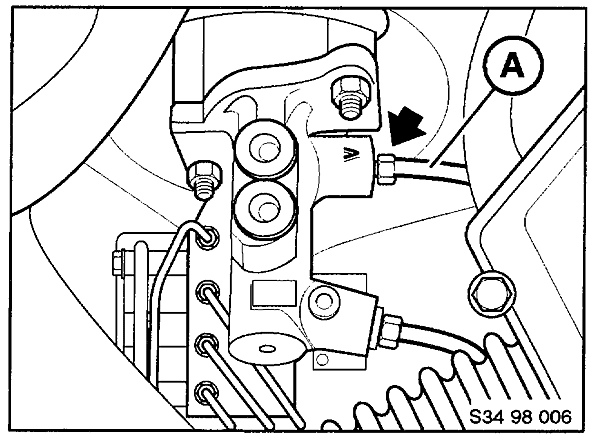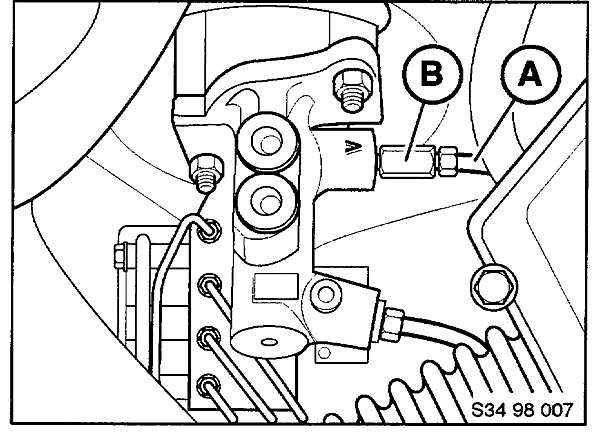In recent years, BMW has improved their vehicles’ brake and steering functions to such a highly technical level, that those systems have become a benchmark in the automotive industry. Their Dynamic Stability Control System (DSC) has virtually eliminated most of the common reasons why we mere mortals wad-up our vehicles by sliding out of control into snow banks, ditches, trees and, unfortunately, each other. By creating one system to correct our steering, braking and acceleration mistakes, BMW has created a mechanical guardian angel to ride shotgun to help protect us from ourselves.
Because of BMW’s stellar reputation for exceptional stability, many BMW owners expect nothing less from their late-model vehicles – even if those vehicles are not DSC equipped. You may get a customer complaining of a very slight "twitch" that can be felt in the steering while holding the steering wheel lightly with one hand and giving the brakes a quick tap. The steering wheel will twitch slightly only once, with no disruption in the stability of the car, and no pull to either side. Before you dismiss the owners as “nit-picky whiners,” you should know their complaints may have merit and BMW has offered a solution.
Some 2000 BMW 323 and 328 series vehicles, or “E46’s” the BMW aficionados would say, which are not equipped with a DSC system, can display the symptoms described above. Having unequal amounts of toe-in on each front wheel or a very slight time differential in the build-up of pressure in each front brake caliper could be the cause.
After you have verified that the alignment specifications are correct, install a special BMW dampener that will modify the brake pressure build up curve.
Service Procedure
(Review safety procedures contained in the ALLDATA system before beginning.)
NOTE: The dampener cannot be installed on DSC-equipped vehicles, as it will impair DSC operation.
Procedure:
1. Place a brake pedal holder on brake pedal. 
2. Draw off brake fluid from reservoir and remove reservoir.
3. Disconnect the line to the front brake circuit (A). NOTE: This is the line closest to the booster. 
4. Install the dampener (B) (BMW P/N 34 31 6 750 384) into the master cylinder port and tighten to 12.5-14.0 ft lbs (17-19 Nm). 
5. Connect the brake line (A) to the dampener and tighten.
NOTE: It will probably be necessary to pull up on the line so that proper alignment with the dampener can be achieved.
6. Reinstall the brake reservoir and bleed the brake system.
Remember to test drive the vehicle to verify that the “steering twitch” has been eliminated. This simple brake master cylinder modification will help boost your customer’s faith in their BMW’s inherent stability, and most likely their faith in you.
Accura and RL are registered trademark names and model designations of the American Honda Motor Company. All trademark names and model designations are being used solely for reference and application purposes.
Written by ALLDATA Technical Editor, Rich Diegle. Rich is an Advanced Engine Performance Certified and ASE Master Technician with an Associate of Arts degree in automotive technology and 22 years of dealership and independent shop experience.
Courtesy of ALLDATA.
For additional information, visit www.alldata.com.











